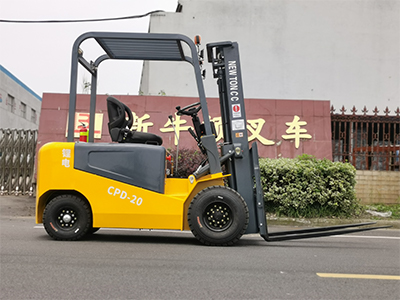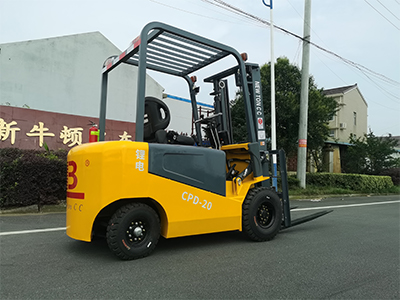Stability of electric forklifts

The stability of electric forklifts, as explained by the manufacturer of electric forklifts, refers to the ability of forklifts to prevent overturning and skidding during operation. Stability is divided into two types: longitudinal stability and lateral stability, which are directly related to vehicle speed, road, wheelbase, wheelbase, center of gravity position, steering speed, etc.
1. Longitudinal stability of electric forklifts. When a forklift goes up, down, or during operation, losing longitudinal stability may cause longitudinal overturning.
When electric forklifts go uphill and downhill in the opposite direction, as long as emergency braking is not used, it is generally impossible to lose longitudinal stability, which is determined by the maximum climbing slope when designing forklifts. When heavy-duty forklifts go uphill or downhill in the opposite direction, as well as unloaded forklifts go downhill in the opposite direction, it is easy to lose longitudinal stability and capsize.

2. Electric forklifts are fully loaded with forklifts, and when the gantry is in the forward tilt position to lift the forks, they are also prone to losing longitudinal stability and tipping forward.
From this, it can be seen that heavy-duty forklifts should travel straight up slopes and backward down slopes, and emergency braking should be avoided on slopes; When it is necessary to lift the forks, the gantry must be in a backward tilt position to prevent the forklift from tipping forward. 2. Lateral stability. Forklifts press on the road surface with their own weight, creating adhesion and maintaining stability. At the same time, they may also be subjected to a lateral force (lateral force). When the lateral force exceeds the lateral stability capacity of the forklift, it will cause the forklift to slide or tip over.
Electric forklift manufacturers point out that the main factors causing lateral force on electric forklifts are as follows: (1) excessive lateral inclination of the road surface during driving; (2) Driving too fast or turning too quickly when turning; (3) The braking force of the left and right wheels is different, and (4) the adhesion coefficient of the road surface under the wheels is different; (5) Partial loading of goods and high center of gravity
评论
发表评论